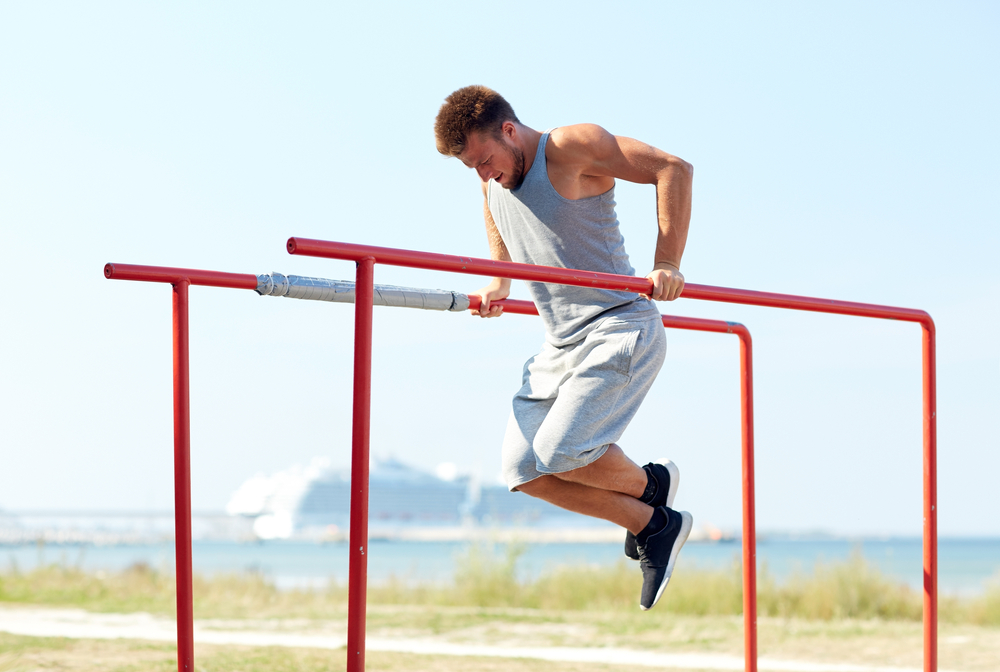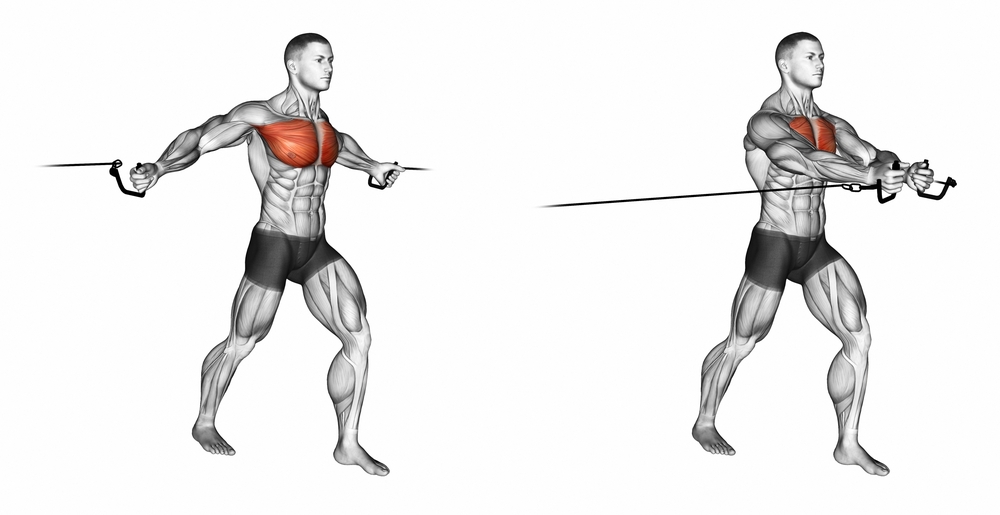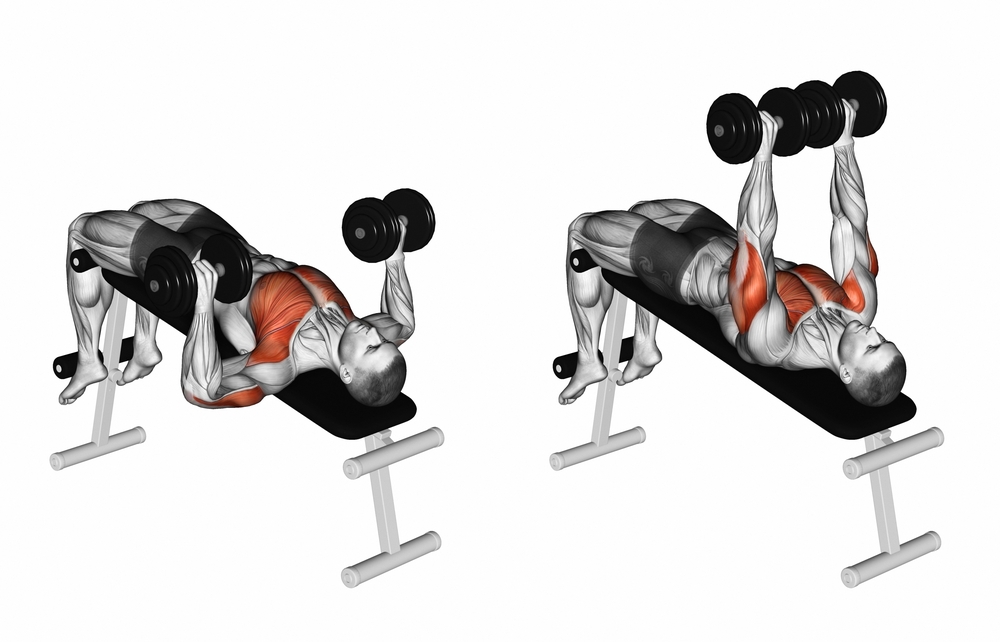
Want to build a killer lower chest? Of course, you do. We’ve come up with a way to do it. All the exercises you need and the training intensities involved are all right here!
A powerful and attractive physique requires a particular development of muscles and proportions. On top of a tapered waist, explosive lats, and broad shoulders, a chiseled lower chest is essential. Women are drawn to it. Men are envious of it. A big strong chest is impressive. A well-shaped and defined chest is key. This only comes about with specific training geared to shape your chest and bring your whole physique together like the great Roman statues.
Want to do it?
We’ve got everything you need to go from zero to hero. Learn what the best exercises are and the best intensity techniques to get a workout you can put to use today!
Training The Lower Chest Is Important
The chest needs to have well-defined outer edges. It also needs a clear bottom point. The dad bod, or the exact opposite of the physique we aim for, is known for a flabby midsection and sagging chest. The key difference between the dad bod and a Herculean physique is a clear ending point of the chest and starting point of the abs.
These Are The Muscles That Matter
The lower chest is typically thought of as the pectoralis major and pectoralis minor. These are the two fan-shaped muscles that overlap each other forming the chest. There is an easily forgotten partner to form a triple threat chest.
What’s that?
It’s the serratus anterior. This muscle goes along the ribs and up into the chest.
Who knew you could actually build up your ribcage?
The serratus anterior has a gill-like look on each side of the body. It connects the V-taper from the lats to the chest. It also further highlights the lower chest definition. For a next level chest, the pectoralis major, pectoralis minor and serratus anterior all require training stimuli.

Lower Chest Exercises
Due to the chest’s fan shape, it means that the entire chest will always be engaged no matter what exercise is done. While we can’t necessarily isolate one part of your chest, we can place an emphasis on a certain area.
The angle of tension will determine what area will receive the most stimuli. Essentially in the ending position of the chest exercise, your hands should be slightly closer to your legs than head. For most exercises, this means going into a decline position. This puts added emphasis on your lower chest. What follows are the exercises you need to be doing for a better lower chest and body.
Decline Presses
Most decline benches are adjusted to a 45-degree angle. This is perfect for targeting your lower chest muscle fibers. The difference in emphasis between decline, flat and incline presses should be fairly clear.
While this initial angle is important, the equipment is as well.
As usual, barbells will allow for more total weight to be moved. This is great for working lower rep ranges and shocking your chest. If you’re more concerned with looks and shape, you’ll want to swap out the barbell for a pair of dumbbells. Remember, weight isn’t the most important factor for growing muscle.
Tension is the key.
Dumbbells provide the versatility that’s needed. With dumbbells, your range of motion is greater. This means a greater stretch and contraction in the muscle. It always leads to enhanced muscle development.
Range of motion is typically thought of as the total distance the weight moves, but it’s much more than that. It also involves the actual path and tension that flows down through your body. Barbells require a fixed hand position while dumbbells allow for internal and external rotation. Slightly rotating your hands inwards actually further activates your chest muscles. With your hands and elbows slightly rotated inwards, the force produced from lifting weights is spread out to more muscle fibers.
The last important variation dumbbells allow for is the ability to bring your hands together at the top. You may already be doing this after seeing others do it. This serves a very important purpose. Your chest’s function is to extend your arms away from your body. It’s also to adduct or bring your arms together (think of a flye motion). In both extending and bringing together your arms with a dumbbell, the chest is doubled up on.
We all love two for ones, especially when it means a better body. When doing the dumbbell press, ensure your hands and elbows are at 45 degrees and the weights come together at the top.
Parallel Bar Dips
The king of calisthenics is also tops for building your lower chest. Dips performed with parallel bars can create the same angle of force as decline presses. To ensure that your body is in the proper alignment, lean forward at a 45-degree angle. If your body is upright, the emphasis will shift towards your triceps rather than your chest.
Dips are a great tool.
Why?
They offer a lot of flexibility within a workout. Unlike other exercises, they’re closed chain. In other words, your hands stay in the same place rather than moving like a bench press. This provides a different stimulus and makes it easy to push out the last reps since a spotter isn’t needed.
Dips, like dumbbells, also allow for a large range of motion. With your elbows brought in relatively close to your body, this increase in range will be felt as your pectoral muscle lengthens.
Here is how bar dips can be used. Perform weighted dips by using a chain belt. It’s a great strength to bodyweight measure that quickly develops size in your lower chest. This is a part of your workout that can’t be skimped on.
Unweighted dips are great as well.
Why?
They can even be done on an assisted machine to get the benefits of a closed chain exercise without requiring as much strength. In this workout, you’ll push dips to the max doing both weighted and bodyweight negative dips. The technique for these is simple. Doing them is another story.
Start by setting up normally on the bars. Lower your body down for a five-second count. If you can, press yourself back up to the top and repeat. If not, just step back up to the top and repeat. It’s a good idea to have a partner hold your feet to help you up and enforce the five-second rule. Call it a set when you complete 10 reps or when you can no longer go down in at least three seconds. This massive time under tension will wreck the pecs and build a stud of a body.

How to Build Lower Chest
Heavy compound exercises are a must for filling out your lower chest. But, just like a big mound of clay, it’s not impressive ’til it’s shaped aesthetically. What high rep isolation exercises lack in sheer power, they make up for with the pump and definition they bring to the table. These exercises will do just that for your lower chest.
High To Low Cable Crossovers
Cable crossovers are awesome for finishing off your pecs. The constant tension provided by the cables inks out whatever is left while ensuring a popping pump. This version requires setting up the cables above shoulder height then doing a downward fly motion. The finishing position should look similar to a most muscular pose. This angle will target your outer pecs creating a visual separation between your pecs and your ribcage while engaging your lower pecs.
Dumbbell Pullovers
This targets the serratus anterior and the lower pecs. It’s an often forgotten exercise but truly separates the impressive from the average. In case this bothers your shoulders, try swapping it out for straight-arm pulldowns.
These Are Intensity Techniques
Picking the right exercises sets the foundation. Taking these exercises and pushing them further is the difference between pretty good and “Holy!” Adding these specific techniques to these already killer exercises will torch your lower chest. Each technique is placed very specifically to get the most out of the rep range, type of exercise and placement within the workout.
Pre-exhaust Technique
The pre-exhaust technique involves doing an isolation exercise prior to a compound exercise. In doing this, the targeted muscle reaches failure before the secondary muscles in the movement give out.
For example, this workout supersets high to low cable crosses with dips. Rather than your triceps and deltoids giving out during dips, it will be your chest. Basically, with the pre-exhaust technique, there’s nowhere for any of your chest muscle fibers to hide.
Post-exhaust Technique
There’s always more than one path that leads to the desired end result. After all, a rainbow has two ends and I reckon either can be followed to find a pot of gold. The post-exhaust method is the opposite of the pre-exhaust method. It starts by doing a big compound movement then finishing off a specific muscle with an isolation exercise. Both techniques are great. With some practice, you can identify what’s most effective at a given time and for a specific goal.
In this chest workout, heavy dips are super setted with dumbbell pullovers.
This combo will push your chest through deep stretches and brutal failure.
Reverse Pyramid Training
In life and in training it’s always best to get the most important things done first. They take the most energy but provide the greatest return. It’s for this reason that the workout starts out with big decline dumbbell presses. This exercise will give the greatest return on your investment. Therefore you should move as much weight as you can with it.
Reverse pyramid training takes this even further. It uses a set rep range for the whole set. For this workout, that’s six to eight reps. The first set will be the heaviest and require the highest amount of force production. For the second and third set, the weight should be reduced by 2.5 to 5%.
Why?
Do that to ensure the targeted reps are still hit while maxing out the weight used. If you’re thinking this will be tough, you’re right.
Each set will push your pecs to their limit.
Negatives
Ironically nothing’s more positively linked with strength and size gains than negatives. Normally negatives are done by picking a weight slightly too heavy to handle, lowering it as slowly as you can, then lifting it with the help of a spotter. Negatives are very taxing and therefore need to be used sparingly.
An optimal way to introduce negatives, or use them more frequently, is through bodyweight exercises. Finishing this workout with negative dips shreds through muscle to the point of masochism.

Lower Chest Workout
Are you ready?
Great!
Here we go!
Start by performing a dynamic warm-up. Then follow the exercises.
1a. Decline Dumbbell Press 3×6-8 (Reverse Pyramid)
2a. Incline Barbell Press 3×10-12
3a. Parallel Bar Dips (Weighted if possible) 3×10-12
-Superset with
3b. Dumbbell Pullover 3×12
4a. High to Low Cable Crossover 3×15-20
-Superset with
4b. Bodyweight Negative Dip (5 second negative) 3×8-12
Conclusion
Building a lower chest is clearly an indispensable feature to getting a better body. Focusing on size, shape, and the surrounding structures takes the ordinary to the extraordinary.
The best way to do this is by following the exact workout listed. We’ve taken out the guesswork and used the best exercises, structured them for success and even gone a step further with a few intensity techniques. You can sleep easy knowing you’ve done all the right things in the gym. Make the most of this workout by supporting it with nutritious food and proactive recovery. The time to build a better body is now. Get on it!
The time to build a better body is now. Get on it!
By Raphael Konforti MS, CPT
Latest posts by Raphael Konforti (see all)
- The Best 4 Day Workout Split For Greater Gains - Feb 6, 2017
- The Best Lower Chest Workout For A Better Body - Aug 15, 2016
- How To Get Rid Of Shin Splints - Jul 7, 2016










I always struggle with taking the pressure off of my triceps while doing dips so this is really helpful. Thanks so much for sharing!
You’re welcome Drew thanks for stopping by!
-Terry Asher
[…] pectoralis major is not only your pectoral muscle but the very top of your arm as well. The latissimus dorsi muscle is a rectangularly shaped muscle […]